Cafayate, Colonia Carlos Pellegrini and Iguazu Falls
After Salta our next stop in Argentina was Cafayate. Cafayate is considered the second largest wine producing region in Argentina, after the more widely known Mendoza.
Cafayate
Cafayate is a short 3.5 hour bus ride from Salta, the drive is scenic with lush green landscapes turning into bright red rocky mountains and then opening up again into a beautiful vineyard filled valley. The type of wine that Cafayate is most known for is called Torrontés. Megan was enamored with this small wine producing town as soon as we entered. The square in the center of town was quaint and reminded us a bit of the one in Sonoma. Rather than jumping right into the wine, we located a neat looking cervecería on one of the corners of the square and decided to indulge in some beer first.
The next day we got started early and decided to wine taste at Bodega El Transito located in town. The first one we went to would end up being the cheapest wine tasting we had in Cafayate at just $2.50 USD for the two of us. We were able to try 3 different wines and had a small tour included. The second one we went to, Bodega Nanni we arrived at right before they closed for their siesta and missed the tour, but had a tasting. This was a bit more expensive at $5.00 USD total, however we had 5 tastings and the pours were a bit larger. Thus far, Markus really began to take a liking to the local wine, Torrontés, finding it similar to one of the white wines from Austria: Gewürztraminer. We then decided it was time for our own siesta. When it has over 90ºF (32ºC) outside it’s easy to get on board with siestas.
We went back out in the afternoon and visited the wine museum. The first half of the museum felt a bit strange, more poetic than educational. The second half was significantly better including the history of Cafayate and the production of wine. We spent the evening at a winery/restaurant in town, Bad Brothers. We considered this dinner to be a bit of a splurge as the prices were higher than most in town. Since Argentinians eat REALLY late, prime dinner hour is 10pm, we had the place to ourselves until we left. The backyard setting was insanely beautiful, we shared two tastings before sharing a dinner of a chacuterie plate, empanadas, a salmon/avocado salad, and a bottle of wine. Our waitress was really kind and invited us to a few additional “tastings” of her favorite wine with her. The entire experience felt like we were at an upscale restaurant in Napa, however our big night out came to a grand total of $40 USD. We estimated it would have been $250-300 easily back home, especially after all the wine purchases.
The next day we wanted to visit the wineries outside of town, without a car, this was a bit complicated. We first walked to the most famous one right outside of town: El Esteco. Their prices for a tour/tasting were a bit expensive at $20 USD, so we decided to just share two glasses–the best Torrontés we had. From there we took a taxi further into the mountain range to Bodega Domingo Molina. This was our favorite winery in all of Cafayate–it felt like a family winery, unpretentious, with great quality wine. We sat outside enjoying the sweeping views over the vineyard and enjoyed our tasting with some local cheese and breadsticks. From here we walked to one of the larger wineries: Piatelli Vineyards. It was an hour walk in the blistering heat, but at least it was downhill and we decided we’d rather invest some extra cash into wine than a taxi. This winery was gorgeous and came with all the expectations one would have of an upscale winery in Napa, which made sense as we found out it’s owned by an American. They have two wineries, one also in Mendoza. We stayed until closing at 6pm and at the end had the entire place to ourselves, all in all it was a great day. All of the fabulous wine tasting in Cafayate came at a small price, our hostal was pretty shitty and roach infested. We went super cheap on accommodation in an attempt to offset our splurges.













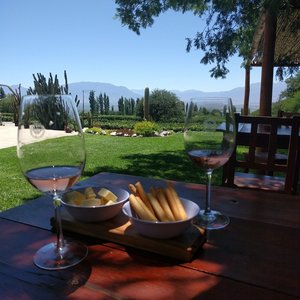

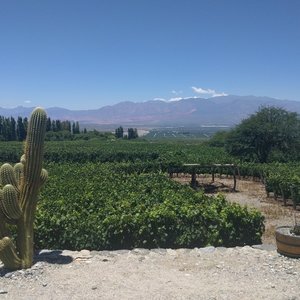





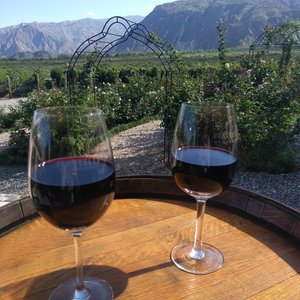


Colonia Carlos Pellegrini
The next two days sucked. We took a 3.5 hour bus back to Salta, waited at the bus station for another 3 hours and then boarded an overnight bus at 3:30pm for Corrientes. We arrived at Corrientes at 5:30am, waited another 2 hours, boarded another 3.5 hour bus to Mercedes, waited another 2 hours, and then finally boarded one last 3.5 hour bus to the middle of nowhere: Colonia Carlos Pellegrini. Why? Wild capybaras.
This small city is located right in the middle of the Ibera wetlands and Markus learned that they have an abundance of wild capybaras. While physically on the way to our stop in Iguazu Falls, this place is extremely difficult to access if you don’t have your own car. On our last bus ride in, Megan began to spot capybaras and told Markus to keep his eye out–sadly his first capybara sighting was roadkill. Despite being hard to get to and out of, we love this place. It feels like a legit small town that happens to have tourism, the complete opposite of our experience with San Pedro de Atacama. The only other tourists we saw were mainly Argentinians.
Our second day here we took a boat tour into the wetlands and it was amazing. The wildlife is so abundant, everywhere you turn there’s something to see. Crocodiles, deer, capybaras, and more unique bird species than you can count. It was really amazing. During one of the evenings we also took a walk through the national park, where we were able to see capybaras up close as they crossed the roads and waded through the marsh–nibbling on everything in their path.



























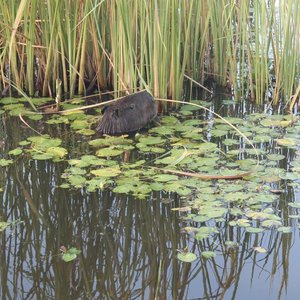

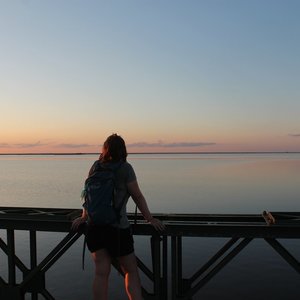
Iguazu Falls
To make it to our next destination, Iguazu Falls, we had to pay quite the hefty amount to get out of Colonia Carlos Pellegrini–$150 USD just to get us to a small city to take a bus to a larger city, Posadas, to then take another bus to Puerto Iguazu. The $150 was to hire a 4WD to get us out via the endless dirt road that connects Colonia Carlos Pellegrini with the rest of the world. We had hoped to find some other people to share the ride with, and the cost, but that didn’t happen.
Iguazu Falls marked the beginning of us travelling in Argentina in style. Megan’s work had their annual Gala last year, where a fabulous Argentina package was sold as a live auction item. Unfortunately the original donor backed out and we ended up purchasing it. We knew we’d be going to Argentina and by this point in our travels would probably want a break from the backpacker life. Huge thank you to Courtney Regan for setting up the remainder of our time in Argentina. As soon as we checked into our room we were blown away by the breathtaking views of the falls from our balcony. We stayed at the Sheraton, the only hotel located directly in the park (at least on the Argentinian side). This is where our luck started to run out. While we opened up a bottle of red wine to celebrate, the entire bottle exploded shooting out all over the white linens. The next day as we had breakfast we could see the impeding storm on the horizon. While we had a private tour of the falls, we had it in continuous torrential rain.
We been through every kind of rain there is. Little bitty stingin’ rain … and big ol’ fat rain. Rain that flew in sideways. And sometimes rain even seemed to come straight up from underneath
– Forrest Gump
Megan couldn’t get that Forrest Gump quote out of her head throughout the entire tour. During this downpour Megan’s phone suffered water damage, this was a pretty big blow to us as we relied heavily on it for the camera and data. We use Google’s Project Fi, which allowed us to have the same data charges no matter what country. Luckily we do have Markus’ crappy phone as backup. Despite all of the rain, the falls are truly spectacular and we’re grateful to have had the experience of witnessing their power and beauty. The next day the sun was out again and all was beautiful, however we thought we needed to rush to the airport because of the time. Unfortunately we accidentally set our alarm in Brazilian time, so despite having time to actually enjoy a bit of the falls in good weather, we rushed to the airport and realized that we had an extra hour too late.























